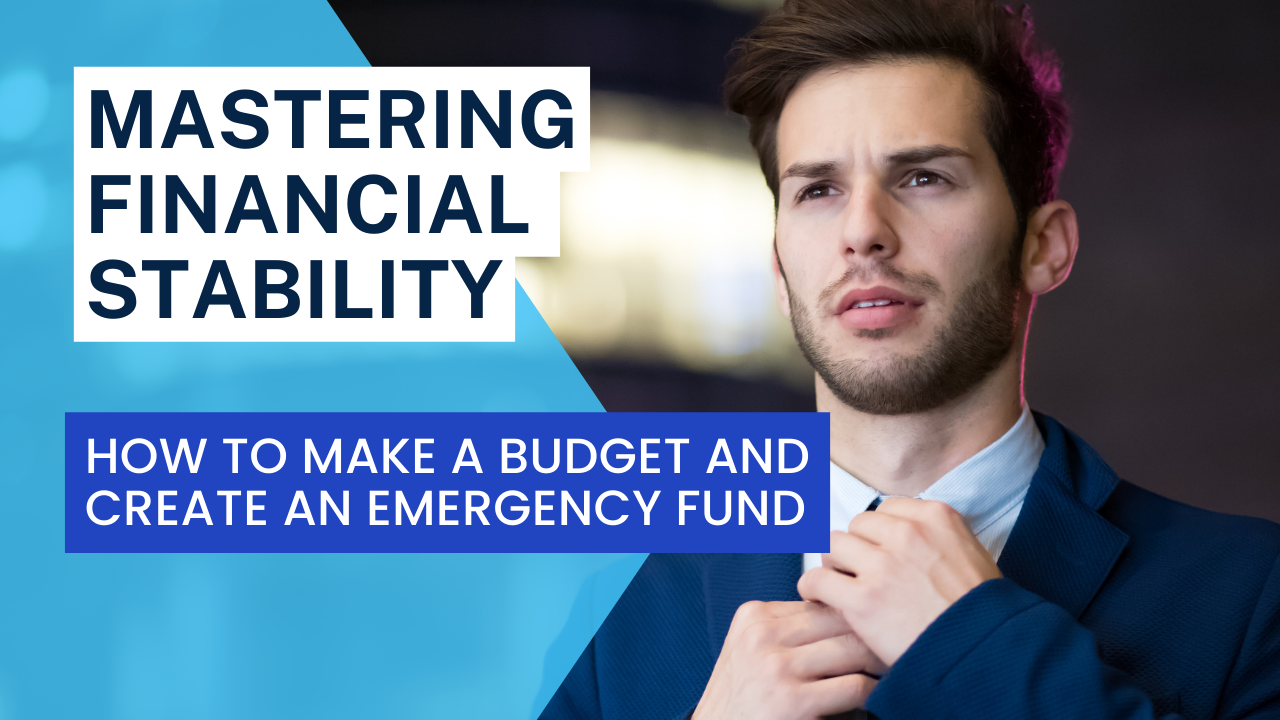Mastering Financial Stability: How to Make a Budget and Create an Emergency Fund
Financial stability is a crucial aspect of our lives, providing a sense of security and peace of mind

Financial stability is a crucial aspect of our lives, providing a sense of security and peace of mind. One of the fundamental pillars of achieving financial stability is managing your money wisely through effective budgeting and creating an emergency fund. In this article, we will guide you through the process of making a budget and establishing an emergency fund, empowering you to take control of your finances and prepare for unexpected expenses.
Step 1: Assess Your Financial Situation
Before diving into budgeting, it's essential to evaluate your current financial situation. Calculate your income and expenses, including fixed costs (rent, utilities, insurance) and variable expenses (groceries, entertainment). Review your previous bank statements and receipts to gain a clear understanding of your spending habits.
Step 2: Set Financial Goals
Identify your short-term and long-term financial goals. Short-term goals can include paying off debt, saving for a vacation, or purchasing a new appliance, while long-term goals may encompass saving for retirement, buying a home, or funding your child's education. Establishing these goals will help guide your budgeting decisions.
Step 3: Create a Realistic Budget
Based on your income, expenses, and financial goals, develop a realistic budget that aligns with your priorities. Categorize your expenses into fixed, variable, and discretionary items. Ensure that your income covers all necessary costs while leaving room for savings and emergency funds. Remember to be flexible and make adjustments as needed.
Step 4: Track Your Expenses
Implement a system to track your expenses. This can be as simple as using a notebook or a budgeting app on your smartphone. Regularly record your expenses to ensure you are staying within the allocated amounts for each category. Tracking your expenses will give you a clear picture of where your money is going and enable you to make informed decisions about your spending habits.
Step 5: Prioritize Saving
An emergency fund acts as a financial safety net and protects you from unexpected expenses. Aim to save at least three to six months' worth of living expenses. Start small if necessary, but be consistent in your savings efforts. Set up an automatic transfer from your checking account to a separate savings account to make saving effortless.
Step 6: Cut Back on Non-Essential Expenses
Review your budget and identify areas where you can reduce expenses. This might involve making small lifestyle changes such as cooking at home more often, canceling unnecessary subscriptions, or finding more affordable alternatives for certain products or services. Remember, every dollar saved brings you closer to your financial goals.
Step 7: Increase Your Income
If your current income is not sufficient to cover your expenses and savings goals, consider exploring opportunities to increase your income. This could involve taking on a part-time job, freelancing, or starting a side business. Maximizing your earning potential can significantly contribute to your financial stability.
Step 8: Build Financial Resilience
Financial emergencies can happen to anyone. Having insurance coverage for health, property, and life can safeguard your finances from unexpected events. Review your insurance policies to ensure they adequately cover your needs and adjust them as necessary. Additionally, consider diversifying your investments to protect your wealth from market fluctuations.
Step 9: Determine the Time Frame
The time it takes to build an emergency fund can vary depending on several factors, including your income, expenses, and savings rate. It is important to set realistic expectations and be patient during this process. If you have a specific savings goal in mind, divide that amount by your monthly savings contribution to estimate the number of months required. For example, if you aim to save $6,000 and can contribute $500 per month, it would take approximately 12 months to reach your goal.
Creating a budget and establishing an emergency fund are integral steps toward achieving financial stability. By assessing your financial situation, setting goals, tracking expenses, saving diligently, and making strategic adjustments, you can take control of your finances and be better prepared for any unexpected events. Remember, financial stability is a journey that requires discipline and consistent effort, but the rewards of peace of mind and greater financial freedom are well worth it.

